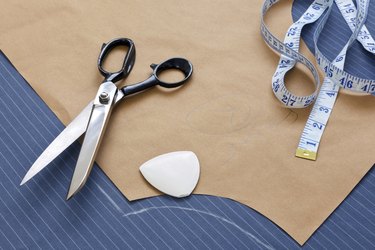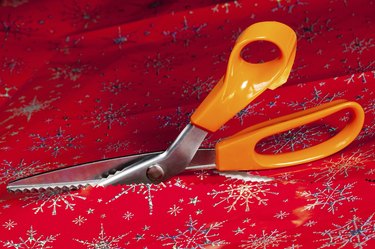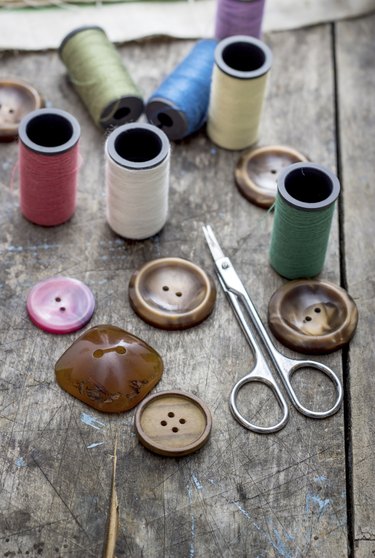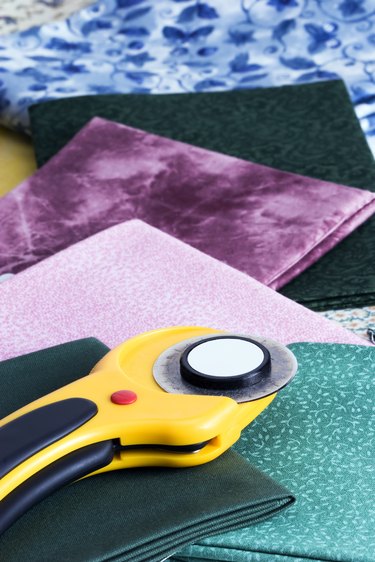
The proper tools are essential for any project that's worth doing. For every sewing project, a pair of scissors exists that helps streamline each step. Many sewing guides suggest building a basic sewing kit with two pairs of good-quality scissors, but with so many different models available, many people who sew eventually end up amassing several pairs. Understanding the job of each type of scissors makes purchasing -- and using -- these fundamental tools easier.
Fabric Shears
Video of the Day

A pair of shears -- whether they're 10-inch tailor's shears or 8-inch dressmaker's shears -- are necessary when you must cut single or double layers of fabric. These shears make longer cuts than standard kitchen-type scissors, and models that sport an angled design of the handle make it possible to cut smoothly along a flat work surface. Mark them -- with a permanent marker or a ribbon tied around the handle -- so they're used only for fabric. Using them to cut paper or other items may dull or nick the blade, which can cause your fabric to snag the next time you use them.
Video of the Day
Pinking Shears

The zig-zag cut that a pair of pinking shears makes minimizes the fraying and unraveling that often occurs to unfinished edges of lightweight woven cloth. These scissors create a saw-like, serrated patterned cut that lays flatter than a blunt edge when the seam is pressed. These types of shears are also useful for creating decorative edges on ribbons and other non-fraying fabrics.
Thread Nippers and Embroidery Scissors

A small, palm-sized pair of blades -- like thread nippers or embroidery scissors -- are ideal for cutting stray threads, string and ribbon when you're sewing. Designed for embroidery and other needlework, these types of scissors are light and slip easily over your fingers to make quick, small, very precise cuts. The tiny yet extremely sharp blades also make these scissors ideal for applique work or buttonholes.
Other Sewing Scissors

Specialty scissors are designed for more specific sewing tasks. Rotary cutters, for example, help ensure a straighter slice over large amounts of fabric. Buttonhole scissors have a small amount of open space between the short blade and the hinge, so you can cut and then safely turn the fabric of the buttonhole. Applique scissors have one regular blade and one duck-billed blade that lifts and supports the fabric as you trim appliques. These specialty additions round out your starter sewing kit and provide more comprehensive control over your cuts.